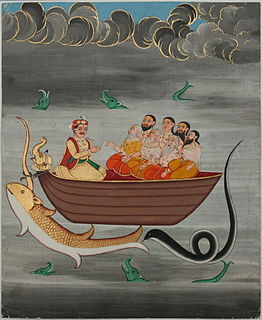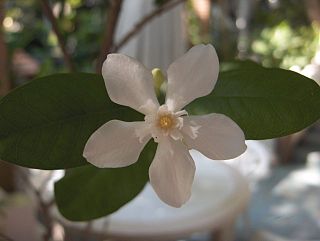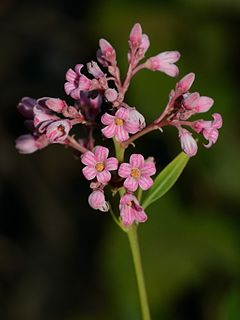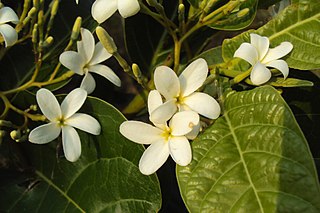
Patañjali, also called Gonardiya, or Gonikaputra, was a sage in Ancient India. Very little is known about him, and no one knows exactly when he lived. It is estimated from analysis of his works that it was between the 4th and 5th centuries CE.
In Hinduism, Buddhism and Jainism, Gandharva is a class of celestial beings whose males are divine singers and females are divine dancers from Gandhara region. It is also a term for skilled singers in Indian classical music.

Chandra, also known as Soma, is the Hindu god of the Moon, and is associated with the night, plants and vegetation. He is one of the Navagraha and Dikpala.

Rishi is a term for an accomplished and enlightened person. They find mentions in various Hindu Vedic texts. Rishis are believed to have composed hymns of the Vedas. Post-Vedic tradition of Hinduism regards the rishis as "great yogis" or "sages" who after intense meditation (tapas) realized the supreme truth and eternal knowledge, which they composed into hymns. The term appears in Pali literature as Ishi and in Buddhism, they can be either Buddhas, Paccekabuddhas, Arahats or a monk of high rank.

The enteric nervous system (ENS) or intrinsic nervous system is one of the main divisions of the autonomic nervous system (ANS) and consists of a mesh-like system of neurons that governs the function of the gastrointestinal tract. It is capable of acting independently of the sympathetic and parasympathetic nervous systems, although it may be influenced by them. The ENS is nicknamed the "second brain". It is derived from neural crest cells.

Apocynaceae is a family of flowering plants that includes trees, shrubs, herbs, stem succulents, and vines, commonly known as the dogbane family, because some taxa were used as dog poison. Members of the family are native to the European, Asian, African, Australian, and American tropics or subtropics, with some temperate members. The former family Asclepiadaceae is considered a subfamily of Apocynaceae and contains 348 genera. A list of Apocynaceae genera may be found here.

Sir Monier Monier-Williams was an Indian-born British scholar who was the second Boden Professor of Sanskrit at Oxford University, England. He studied, documented and taught Asian languages, especially Sanskrit, Persian and Hindustani.

Wrightia is a genus of flowering plants in the family Apocynaceae, first described as a genus in 1810. It native to tropical Africa, China, the Indian Subcontinent, Southeast Asia, Papuasia, and Australia. The species are all small trees or shrubs.
Kalpa means "proper, fit" and is one of the six disciplines of the Vedānga, or ancillary science connected with the Vedas – the scriptures of Hinduism. This field of study is focused on the procedures and ceremonies associated with Vedic ritual practice.

Apocynoideae is a subfamily of the flowering plant family Apocynaceae. It contains about 78 genera with roughly 860 species. Several genera are of pharmacological interest - notably those - such as Strophanthus - which have furnished highly effective arrow poisons, due to their cardiac glycoside content. The subfamily includes many species with flowers of considerable ornamental value, the best-known of which is Nerium oleander, the familiar Oleander. It also contains the remarkable pachycaul genera Adenium and Pachypodium.

Chonemorpha is a genus that consists of large evergreen vigorous woody vines with milky sap from India, Sri Lanka, to Southeast Asia, the Philippines and South China. Growing dormant in sub-tropical and tropical climates and usually losing leaves if temperature gets below 60F. The plants have pubescent to almost tomentose branches, leaves and inflorescences. Large, corrugated, ovate leaves to 40 cm long, deep glossy green, opposite, pale and hairy beneath. Very fragrant, funnel-shaped, showy flowers to 8 cm across with long-peduncled and terminal cymes. Corolla cream with yellow center. Disk cupular with many seeds, ovate-shaped, compressed, with scanty endosperm, with a tuft of hairs at one end, dark brown. The plant is widely grown as a fence cover.
- Chonemorpha assamensisFurtado - Assam, Bangladesh
- Chonemorpha eriostylisPit. in H.Lecomte - Yunnan, Guangdong, Vietnam
- Chonemorpha floccosaTsiang & P.T.Li - Guangxi
- Chonemorpha fragrans(Moon) Alston - China, Indian Subcontinent, Indochina, Malaysia, Indonesia, Philippines
- Chonemorpha megacalyxPierre ex Spire - Yunnan, Laos, Thailand
- Chonemorpha mollisMiq. - Java
- Chonemorpha parvifloraTsiang & P.T.Li - Yunnan, Guangxi
- Chonemorpha pedicellataRao - W Himalayas
- Chonemorpha splendensChun & Tsiang - Yunnan, Hainan
- Chonemorpha verrucosa(Blume) D.J.Middleton - Guangdong, Hainan, Yunnan, Bhutan, Assam, Bangladesh, Indonesia, Malaysia, Indochina

Wrightia tinctoria, Pala indigo plant or dyer's oleander, is a flowering plant species in the genus Wrightia found in India, southeast Asia and Australia. It is found in dry and moist regions in its distribution. Various parts of the plant have been used in traditional medicine, but there is no scientific evidence it is effective or safe for treating any disease.

Holarrhena pubescens is a species of flowering plant in the family Apocynaceae. It is native to central and southern Africa, the Indian Subcontinent, Indochina, and parts of China. In Cambodia, it is called /tɨk dɑh kʰlaː thɔm/ ទឹកដោះខ្លាធំ big tiger milk or /kʰlaɛɲ kŭəŋ/ ខ្លែងគង់ invulnerable kite. These seeds are sold as indraja (इनद्राजा) for Ayurvedic medicine in India.

Holarrhena is a genus of plant in the family Apocynaceae first described as a genus in 1810. It is native to tropical and southern Africa as well as south, east, and southeast Asia. As of August 2013 the World Checklist of Selected Plant Families recognises 5 species:

Elytropus is a genus of flowering plants in the family Apocynaceae, first described as a genus in 1860. It contains only one known species, Elytropus chilensis, native to Chile and to Rio Negro Province in Argentina.
Fodina stola is a moth of the family Noctuidae first described by Achille Guenée in 1852. It is found in India and Sri Lanka. Caterpillars are known to feed on Anogeissus latifolia, Cassia fistula, Holarrhena antidysenterica, Holarrhena pubescens and Tabernaemontana heyneana.

Wrightia annamensis is a small tree species in the family Apocynaceae. Its distribution includes: southern China, Cambodia and Viet Nam: where it may be called: lòng mức trung bộ.

Wrightia pubescens is a species of small tree in the family Apocynaceae. Its distribution includes: Australia, southern China, Taiwan (introduced), Indonesia, New Guinea, Philippines and Indo-China. In Viet Nam, it may be called: lòng mức lông.

Cyclea peltata, also called patha or Indian moon-seed, is a climbing shrub found across India and Sri Lanka, in habitats ranging from Moist Deciduous Forests to Tropical Forests and Plains.
















